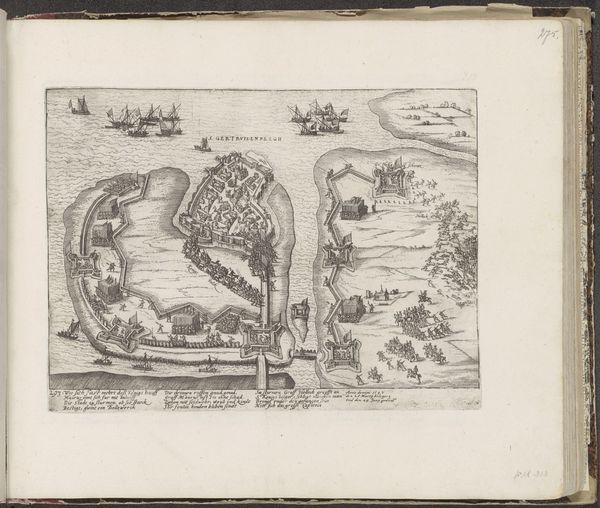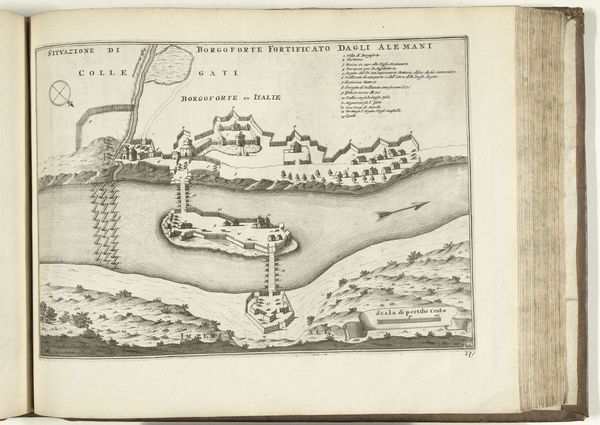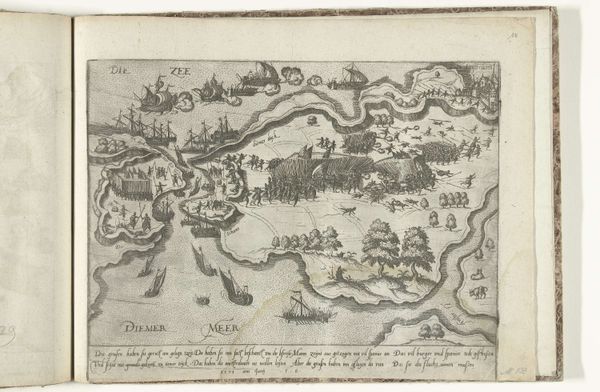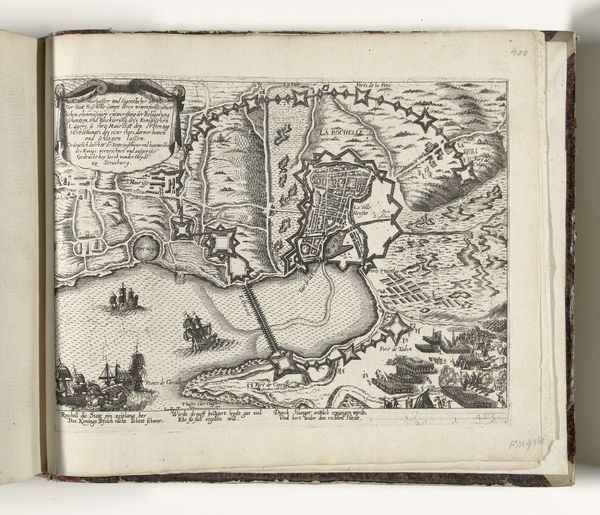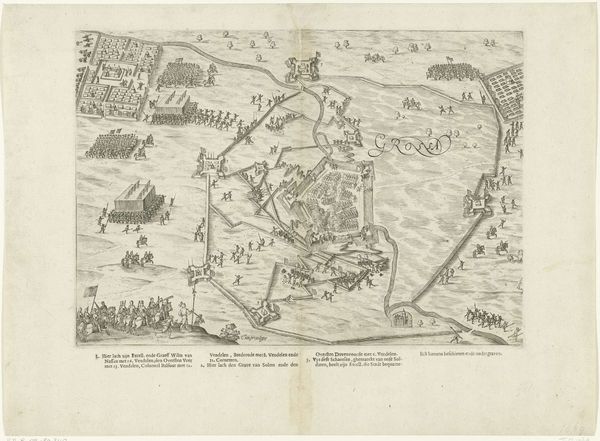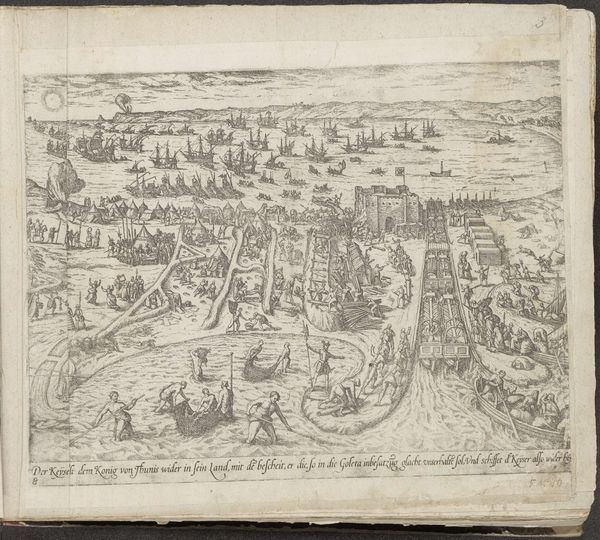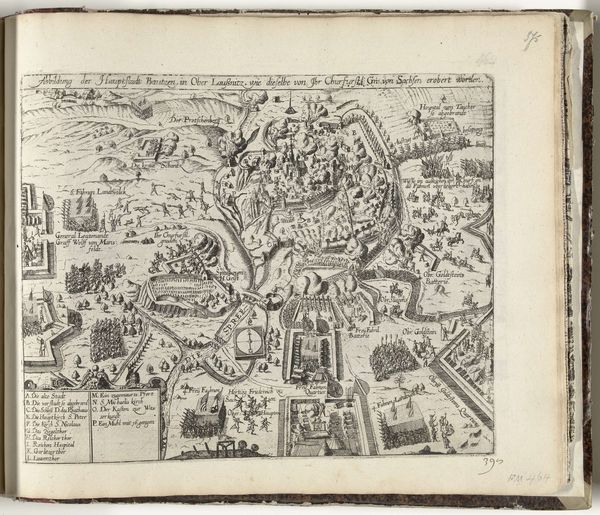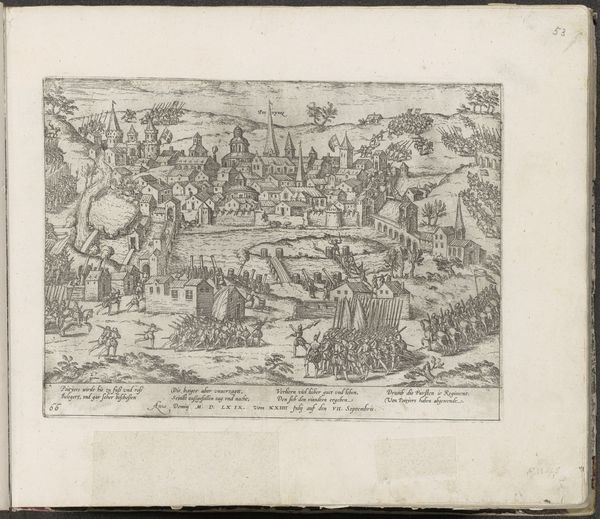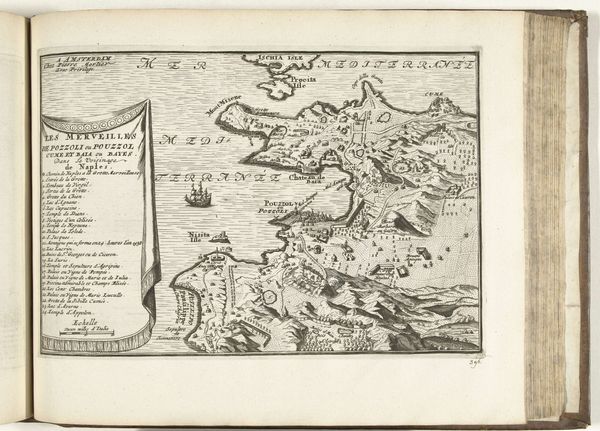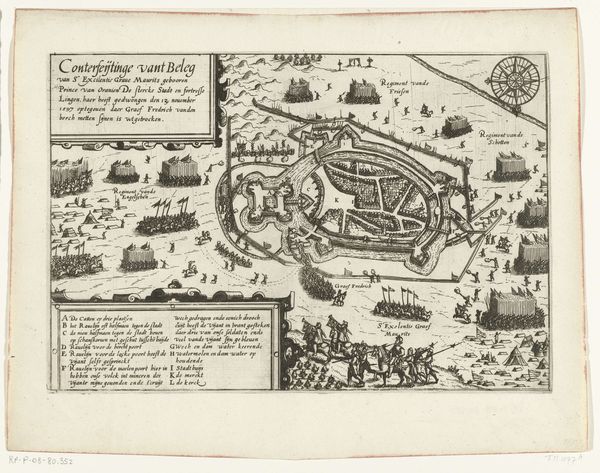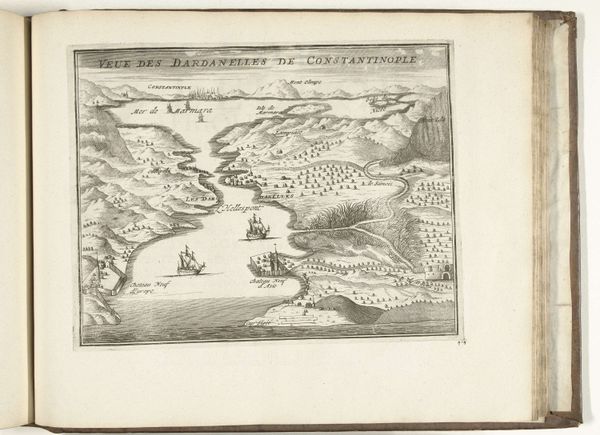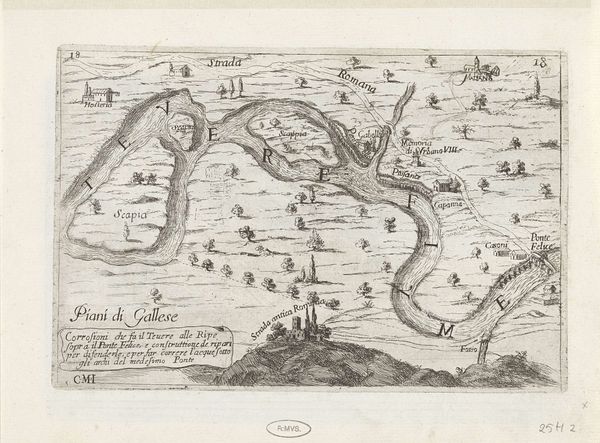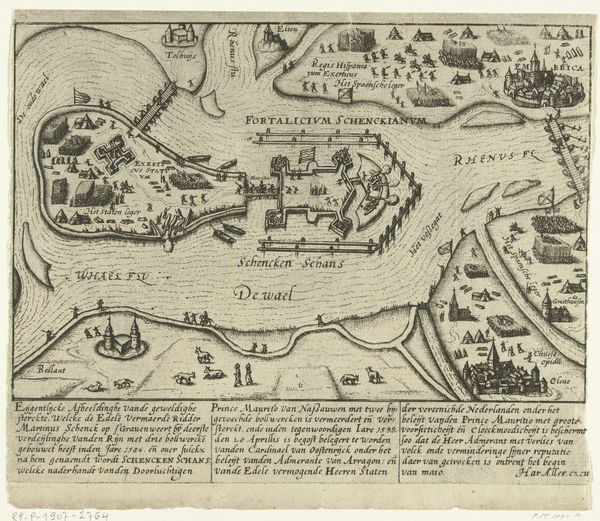
drawing, print, etching, ink
#
drawing
#
medieval
#
pen drawing
# print
#
pen sketch
#
etching
#
sketch book
#
personal sketchbook
#
ink
#
sketchwork
#
ink drawing experimentation
#
pen-ink sketch
#
pen work
#
sketchbook drawing
#
cityscape
#
history-painting
#
sketchbook art
Dimensions: height 210 mm, width 280 mm
Copyright: Rijks Museum: Open Domain
Curator: What a wonderfully detailed bird’s-eye view! This is Frans Hogenberg’s print, "Inname van Geertruidenberg, 1593," made sometime between 1593 and 1595. The Rijksmuseum is fortunate to have it in its collection. Editor: You know, looking at this intricate etching, I immediately get this feeling of meticulous planning, but also utter chaos, somehow all wrapped into one. It’s like a military strategist’s daydream—or nightmare. Curator: Indeed. Hogenberg was known for his cityscapes and historical prints. This piece captures the siege and capture of Geertruidenberg by Maurice of Nassau during the Eighty Years' War. Note the strategic placement of troops, fortifications, and ships. It served not only as a record but also as propaganda. Editor: Propaganda, yes, I see that. It's a carefully constructed narrative, isn't it? The way the invading forces are depicted so orderly, so... purposeful. I can almost smell the gunpowder and hear the trumpets. But it also feels detached, like a board game being played with human lives. Does that make sense? Curator: Perfectly. Prints like these played a crucial role in shaping public perception of the conflict. They visually disseminated information, influencing political discourse. And yes, the seeming detachment speaks to the era's view of war as both political and, sadly, almost inevitable. Editor: And the fact that it's in a sketchbook adds another layer. It's not just a grand statement but almost a personal observation. It bridges the gap between historical record and lived experience. Or perhaps just my romantic idea of a field sketch. Curator: That's insightful. Seeing this print within a sketchbook context makes me think about its broader distribution and usage—how it might have been shared and contemplated. Editor: Exactly. I love that art can do that: simultaneously be grand and intimate, political and personal. It certainly leaves a lasting impression. Curator: Indeed, it gives us a window into both the strategies of war and the shaping of public memory. Editor: Well said. It also reveals how easily a work of art is able to make war into a remote, abstracted concept. Something to consider.
Comments
No comments
Be the first to comment and join the conversation on the ultimate creative platform.
